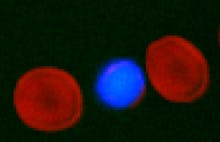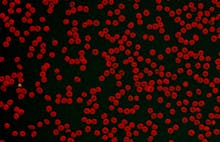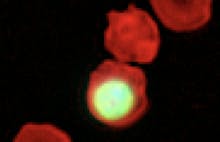Granulocytes
Definition, Ranges, Causes & Immature cellsGranulocytes Definition
Granulocytes are the most common type of white blood cell. There are three types of white blood cells within the granulocyte “family”. These cells are characterized by their enzyme granules, which develop in the cytoplasm.
When the immune system is under attack by an infection, an asthma attack, or an allergic reaction, the granulocyte releases the granules to fight against the problem.
Chemical signals either on the surface of, or released by, harmful and invading substances attract the granulocytes to the site of the issue. When drawn to the site, they fight the infection by releasing their granules.
Granulocytes develop in the bone marrow and live for a few days, and only circulate through the bloodstream in the last few hours of life.
What Are The 3 Different Forms of Granulocytes?
There are three types of granulocytes in the blood: neutrophils, eosinophils, and basophils.
Each type of granulocyte is distinguished by the different chemicals that make up the enzymes in its granules. The different chemical compositions can be identified with a compound dye. This process is used to identify and distinguish the different types of cell.
Neutrophils are the most common type of granulocyte. Each neutrophil cell can ingest up to between around 5 and 20 bacteria in its lifetime.
Eosinophils are used in many, if not all, immune system responses. Notably, they are involved in allergic reactions, but they can also combat multicellular parasites such as worms.
Basophils also take part in allergic reactions. These cells release histamine, which causes inflammation, and heparin, a blood thinner which prevents clotting.
What Is Absolute Granulocytes Count And How Is It Measured?
An absolute blood cell count is a part of the results of a blood test. It is when a blood cell count is presented as a whole number, rather than as a percentage.
The absolute granulocyte count can be calculated by multiplying the total white blood cell count against the percentage of this count which are granulocytes. For instance, if the white blood cell count is 8000 and 5% of the white blood cells are granulocytes, the absolute count of granulocytes would be 400 (8000 x 0.05).
What Do Immature Granulocytes Mean?
Normally, granulocytes develop in the bone marrow before being released into the bloodstream.
If someone is more than a few days old, and isn’t pregnant, immature granulocytes in the blood can indicate an early-stage response to infection or an issue with the bone marrow.
What Is The Normal Range For Granulocytes?
About two thirds of the body’s white blood cells should be granulocytes. Low granulocytes, a condition called granulocytopenia, makes the body more prone to infections.
Of the body’s white blood cells, an average count of neutrophils is 50-70% (2500-7000 absolute count). An average count of eosinophils is 1-3% (100-300 absolute count). An average count of basophils is 0.4%-1% (40-100 absolute count).
Pregnancy can affect this count without any other health effects.
What Causes Low Granulocytes?
Low granulocytes is a condition called granulocytopenia, or sometimes called agranulocytosis. A low granulocytes count is usually caused by a condition affecting the blood such as anemia or leukemia.
Such conditions either stop the body from being able to produce new blood cells, or damages existing blood cells. Blood conditions that can cause low granulocytes include leukemia, anemia, or side effects from chemotherapy.
The lack of sufficient granulocytes makes the body more prone to infections. This can lead to an increase in sore throats and fevers. Other illnesses, such as urinary tract infections, pneumonia or influenza often develop faster than normal, because the body can’t effectively fight off the infection.
The term granulocytopenia is sometimes used interchangeably with the term neutropenia, as this is usually the main type of granulocytes that the body lacks. Most people who are granulocytopenic are also neutropenic.
What Causes High Granulocytes?
A high count of granulocytes in the blood is a condition called granulocytosis. This is the opposite of granulocytopenia, or low granulocytes, and is a concerning condition because it usually indicates an infection, autoimmune disease, or blood cell cancer.
Conditions affecting the bone marrow are a main cause of granulocytosis. Bone marrow is the sponge-like tissue found inside of the bones, which contains the stem cells to produce white blood cells, red blood cells, and platelets.
Granulocytosis is the main symptom of chronic myelogenous leukemia (CML). This rare blood cell cancer begins in the bone marrow and stops cells from maturing properly. This leads to a buildup of immature granulocytes in the bloodstream.
Other bone marrow disorders that can cause granulocytosis are polycythemia vera, primary thrombocythemia and primary myelofibrosis.
Discover Sight's Automated Hematology Analyzer
Disclaimer: The content of this knowledge post intends to provide general information related to topics that are relevant to blood diagnostics and may not be used in relation to the operation of Sight OLO. For detailed information on the diagnostic parameters and specifications of Sight OLO, please refer to the official Operator's Manual.


